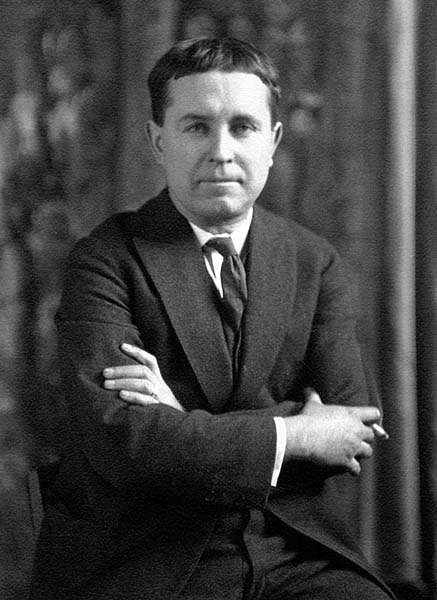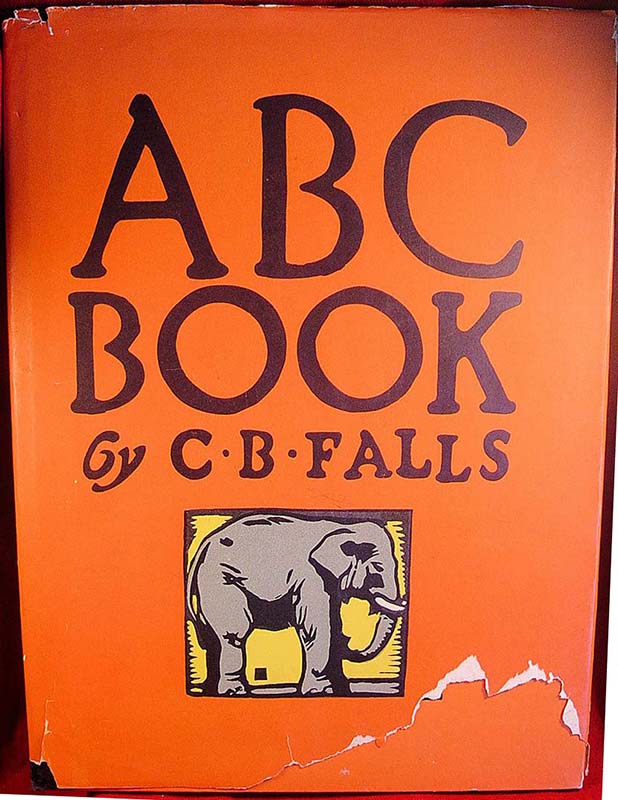Share via:
Charles Buckles Falls – American illustrator, 1874-1960

American illustrator, 1874-1960. When Charles Buckles Falls created his well-known ABC Book (1923), he was already a noted poster artist, having designed posters for the theater and for the government during World War I.
In fact, illustration of books for children and adults represents only one aspect of C.B. Falls’s career as a freelance artist. He produced magazine illustrations; murals; prints; paintings; furniture, carpet, and fabric designs; advertising art; and scene and costume designs for the theater.
Falls taught himself his craft and continued his education on the job. In the February 1962 issue of American Artist, Norman Kent describes how C.B. Falls’s early employment influenced his style. He suggests, for instance, that the year Falls spent working for an architect fostered an awareness of “form, volume, and space.” Later, performing the role of today’s news photographer, Falls worked as a sketch artist for the Chicago Tribune, a job that required quick draftsmanship and a flair for capturing the essence of the incident he was reporting.
In the ABC Book the large woodcuts, with their flat color, display the attention to positive and negative space praised by Kent. Each page depicts an animal, one for each letter of the alphabet, along with a boldly lettered sentence: “A is for antelope,” “B is for bear,” and so forth. While earlier books by British artist William Nicholson may have influenced Falls. Falls’s ABC Book was welcomed as a landmark in American picture book production.

Falls published Mother Goose in 1924 and The Modern ABC Book in 1930. His second alphabet book features contemporary lettering and up-to-date elements such as “E is for electric engine” and “S is for skyscraper.” Many of the images are more complex but not a striking as the woodcuts in the first book. Falls also worked on books for older children. He created numerous black-and-white drawings for nonfiction titles, many on historical subjects.
Examples include Mary Seymour Lucas’s Vast Horizons (1943), about Portuguese exploration; Katherine B. Shippen’s New Found World (1945), a Newbery Honor Book about the history of Latin America; and Elizabeth Bairn Americans before Columbus (1951), another Newberry Honor Book.
Falls supplied illustrations for fiction as well, including Robert Louis Stevenson’s Treasure Island (1946) and Kidnapped (1947) and Ann Weil’s Newbery Honor Book Red Sails to Capri (1952). He both wrote and illustrated his last book, The First 3000 Years Ancient Civilization of the Tigris, Euphrates, and Nile River Valleys and the Mediterranean Sea (1960).
C.B. Falls’s artwork varies a great deal, from his line drawings to the patterns and stylized figures of Esther Singleton’s The Wild Flower Fairy Book (1905) to the scratch lines and muted colors of Jessie B. White’s play Snow White and the Seven Dwarfs (1912). His ABC Book which remained in print for many years, become even more noteworthy when considered in the context of his lifelong career as a designer and graphic artist.
§ M.F.S.
Source: Children’s Books and their Creators, Anita Silvey.
